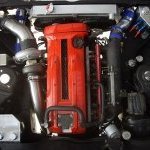T78 Rb25Det
Announcements
-
Similar Content
-
Latest Posts
-
By RB25inside · Posted
UPDATE: Yes the GSP Axles are compatible. I installed it on my R34 today and they are working a treat! Turns out that the S13, S14, S15, and 200 SX all used the same axles as the HR34, and ER34 NA models. Which is 2 bolt x 3 pairs. -
Also build this EH ute with 370z motor and gearbox with a couple of turbos just for fun.
-
Got the passenger door on plus the master cylinder and booster. Loaded up to take it home. At home, the colour changes a lot in the light.
-
By joshuaho96 · Posted
Nothing cheap, but I have seen the AC Hydraulic DK13HLQ which is pretty close to what you're asking for. The problem is the hydraulic cylinder mandates that the back of the jack be a certain height and Skylines have fairly deep inset floor jack points. A more certain and cheap option is to get some nominal 2x10 inch lumber boards and have one board be 1.5 feet, the other board 3 feet. Glue it all together with lots of clamps to maintain pressure. Make two of these. The ramp suggested above is a good idea, it takes quite a bit of clutch slip to get over each of the boards. I only need the first ~1.5 inches for my low profile jack on a standard ride height car but a lowered car you want to go up to the full ~3-3.5 inches. Paint it or store indoors if you want it to last. -
Ok. And Nistune? I read (here too) mainly on Stagea threads that it can by "turn off" with Nistune. But they say they still had the sensor plug in. Next week iam going to the Nistune(and other ECUs) tuner so i can finally make it work. I drove the car home and apart from the cut it drove great. No misfire no smoke no hesitation or rough start...so hoping it is this sensor that is missing
-





Recommended Posts
Create an account or sign in to comment
You need to be a member in order to leave a comment
Create an account
Sign up for a new account in our community. It's easy!
Register a new accountSign in
Already have an account? Sign in here.
Sign In Now